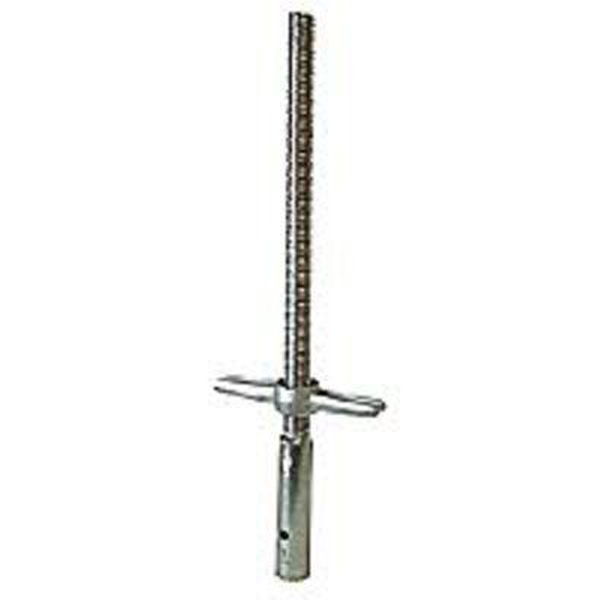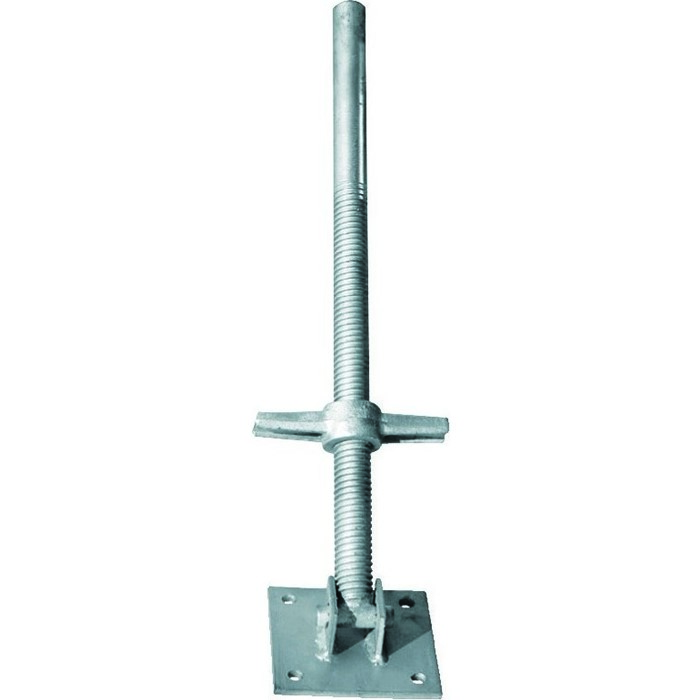
The ends of each platform must be cleated or restrained by hooks (or equivalent) to prevent accidental displacement, or must extend at least 6 inches over the centerline of the support.

the side of a building) basically serves as the fall protection system. Where the platform will not be more than 14 inches from the face of the work (18 inches for plastering and lathing operations), fall protection is not required. Platforms and walkways, in general, must be at least 18 inches wide. The space between planks cannot exceed 1 inch, except where necessary for obstructions. The space between the last plank and the uprights cannot exceed 9 1/2 inches.

Scaffolds must be fully planked or decked whenever possible.
Note: Once a plank has been used as a mud sill, it cannot be used as decking again. If solid sawn wood is used, it must be scaffold grade. Platform/decking planks may be made of solid sawn wood, manufactured wood, manufactured steel, or manufactured aluminum. Horizontal Securingįor long (running) scaffolds, guys, ties, and braces shall be installed at each end of the scaffold and at horizontal intervals not to exceed 30 feet. For example, if the base width is three feet, the first vertical tie will be (3 feet x 4) 12 feet from the ground. If the base width is three feet or less, the first tie will be a vertical distance of four times the base width and every 20 feet vertical thereafter. For example, if the base width is 5 feet, the first vertical tie will be (5 feet x 4) 20 feet from the ground. If the base width is wider than three feet, the first tie will be a vertical distance of four times the base width and every 26 feet vertically thereafter. Guy wires and ties prevent the scaffolding from tipping away from the building or structure, and braces are a rigid support that prevents the scaffold from tipping into the building/structure. Guys, ties and braces shall be installed where horizontal members support both inner and outer legs. Scaffolds with a height-to-base width ratio of more than four to one shall be restrained from tipping over by guying, tying, bracing, or equivalent means. bucks) must be joined together vertically by coupling or stacking pins (or equivalent means). To ensure the scaffold is "square", use a tape measure and measure the distance between opposite corners. To make sure the scaffold is level, use a level on a horizontal support or bearer. To check a scaffold for being plumb, use a level on two opposite uprights. Crossbracing is required on both front and back sides of each scaffold buck or frame.Ī horizontal diagonal brace is required on the bottom buck of scaffolding at a 45 degree angle. perfectly vertical) and braced to prevent swaying and displacement. Supported scaffold poles, legs, posts, frames, and uprights shall be plumb (i.e. (For mobile scaffolds, the maximum height of the screw jack is 12 inches.) Plumb/Level/Square Most screw jacks will have a built-in stop so that the maximum height cannot be exceeded. The maximum extension for a screw jack is 18 inches high. Screw jacks must be used to level scaffolding on uneven surfaces. Unstable objects, such as bricks, cinder blocks, buckets, scrap lumber, etc., shall not be used to support or level scaffolds. The base and mud sill must provide a solid surface for the feet to sit upon so that the scaffold doesn't sink, move, settle, or shift. The size of the mud sill shall be based on the type of soil the scaffold will be erected upon. Supported scaffold poles, legs, posts, frames, and uprights shall bear on base plates and mud sills (or other adequate firm foundation). Scaffold components of dissimilar metals should not be used together, unless the competent person has determined that galvanic action will not reduce the strength of any component. Scaffold components cannot be mixed if they are from different manufacturers unless they fit together without force. Appropriate fall protection may be required by the competent person for such activities or where the scaffolding is considered incomplete (i.e. 
Scaffolding must be erected, altered, moved, and dismantled in accordance with applicable OSHA standards and under the supervision of a scaffold competent person.







 0 kommentar(er)
0 kommentar(er)
